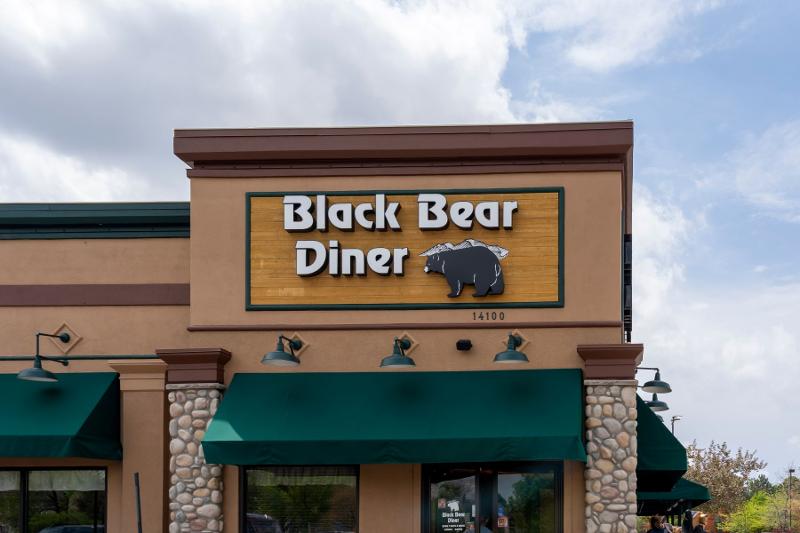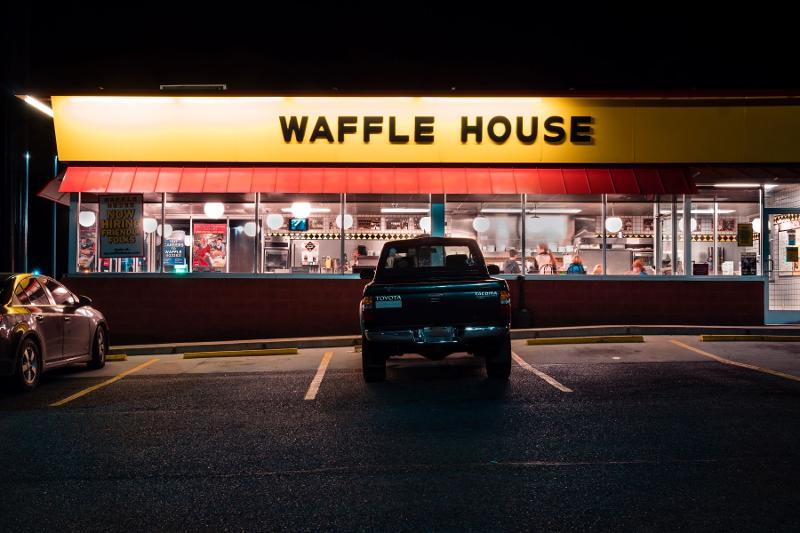
10 largest family-dining chains ranked by systemwide sales
By Peter Romeo on Jun. 05, 2024#10: Sizzler
Nostalgia is emerging as a common way for family dining greybeards to snag the attention of customers who’ve moved on to glitzier, fresher concepts. But few in the sector have wielded it with the same enthusiasm as Sizzler, the steak-and-buffet concept that reigned as one of the industry’s hottest concepts in the 1980s. The chain is urging consumers who might’ve eaten there with their parents to relive those good ol’ days by dropping in again. The hope is they’ll find enough positives beyond fond memories to keep them coming back, like convenience (the buffet still offers a quick lunch) and value (its steaks are still priced below what guests might pay in a casual-dining chain.)
#9: Black Bear Diner
Black Bear Diner doesn’t need a Goldilocks to tell it the time is just right to get growing again. After suspending development during the pandemic, the brand is resuming the development gait that pushed it considerably past its West Coast base in the Before Times. Texas has been a particularly receptive market, with a handful of openings there since 2022. The concept itself has remained fairly static, with an emphasis on big portions sold at prices that resonate with families fretting about what’s in their wallets.
#8: Perkins Restaurant & Bakery
With new management in place at parent company Ascent Hospitality Management, the focus at Perkins is less on changing the brand than amplifying the narrative of what it is and what makes it different. Fortunately for the concept, that story will likely accentuate the perception that Perkins is a place where a family can eat without breaking the bank. Value has been its watchword since the concept began in 1957 as Smithies Pancake House. Simultaneously, it continues to make menu news through limited-time offers.
#7: Bob Evans
The ranch-themed chain has been quietly overhauling its operations and menu, leaving the headlines to other brands in the sector. The tweaks have been as granular as changing the build and presentation of the fish sandwich it promoted during lunch. Now management is betting the brand is ready to be put on the market. Reports running through the financial community say the concept is being shopped, though neither the chain nor its parent, Golden Gate Capital, would comment.
#6: First Watch
Stung by the traffic erosion that hit much of the industry in Q1, First Watch proved neither it nor the fast-growing breakfast, lunch and brunch sector it leads are immune to consumer belt-tightening. But the brand doesn’t intend to win back skipped visits by becoming a discount mill. Indeed, it’s betting the offer of higher-priced past favorites will do the trick. As CEO Chris Tomasso explained to financial analysts, the idea is to overcome patrons’ reluctance to indulge in another visit by touting a dish they’ve loved in the past. Even though that option may be higher priced, customers will come for it because they know they won’t be disappointed, a process Tomasso calls “de-risking.” First Watch will also hold to its contrarian approach of operating most of the stores in the chain instead of growing rapidly through franchising. Indeed, it intends to continue acquiring franchisees as the opportunity arises.
#5: Waffle House
Let the history books show that the most change-averse chain this side of In-N-Out is evolving with the times. Patrons can still get their hashbrowns smothered, covered, scattered or all-the-way, but now they can order them via an app. Indeed, loyalty-program regulars can use their phones to program a unit’s jukebox, a feature many early app adapters have yet to embrace. The big news for the chain this year has been the bead drawn on it by an usual new type of labor organization, the Union of Southern Service Workers, an affiliate of the deep-pocketed Service Employees International Union. The group is pressuring the chain to raise its lowest wage to at least $25 an hour; take steps to protect workers during the overnight shift; and drop the $3 charge it levies for employees’ meals regardless of whether the offer is taken.
#4: Golden Corral
The daunting experiences of the pandemic have changed the buffet sub-sector of family dining—a decidedly thin competitive set these days, in part because of the carnage from the crisis. But, to use the slogan Golden Corral management has adopted in recent months, the comeback has proven far greater than the setback, in part because of pent-up demand and the lessons learned in the bleakest of days. The brand’s winning formula of abundance, variety and a bargain price remain its main crowd-pleasers. But the spinoff of a fast-casual format called Homeward Kitchen has been a Ph.D. program for the mother brand in enhancing convenience, efficiency and an appreciation of technology. Among the lessons learned were insights on portion sizes, packaging and digital ordering. Homeward Kitchen is its own venture, but Golden Corral is unabashedly peering over the upstart’s shoulder.
#3: Cracker Barrel Old County Store
New CEO Julie Masino is leading her team in a makeover of the general store-themed chain, based on extensive research on the public’s dining preferences. The brand is undertaking a 360-degree re-direction, not a mere tweak here and there. Though Yum Brands alumna, who took the reins in November, has indicated that a significant menu overhaul will be a key component of the new strategy. Masino has already informed Wall Street that a new bill of fare is in test, as is a new menu section listing reduced-size entrees available from 4 p.m. to 6 p.m. on weekdays for $8.99.
#2: Denny's
With a pert young understudy primping for a star turn, the greybeard diner chain is counting on a mix of nostalgia and amped-up value to win back lapsed customers. Denny’s now boasts an array of entrees priced as low as $5.99, which is also the current price of arguably its best-known offering, the Grand Slam breakfast platter. Meanwhile, the operation is counting on the convenience of delivery and to-go service to draw in younger consumers. Like IHOP, it’s embracing virtual concepts as the means, with a third, called Banda Burrito, expected to be rolled systemwide in Q4. Those efforts to reverse declining traffic coincide with efforts to ready Denny’s young sister concept, Keke’s, for widespread expansion. The prep work comes as the Denny’s brand continues to prune weak stores.
#1: IHOP
With the real world proving difficult, the pancake specialist is increasing its dependence on virtual brands. The Dine Brands holding has struck a deal to turn its kitchens into the production facilities for two delivery-only concepts, NASCAR Refuel Tenders & Burgers and MLB Ballpark Bites, both from Virtual Dining Concepts’ stable of brands. A partnership with another virtual-concept aggregator, NextBite, melted along with that operation. Meanwhile, the venerable chain is trying to lure back customers by focusing its marketing on old favs like its Rooty Tooty Fresh ‘n Fruity platter. Licensing is also figuring more prominently into the IHOP business, with Rooty Tooty-flavored snack chips about to hit the retail market, joining IHOP-brand coffee.









